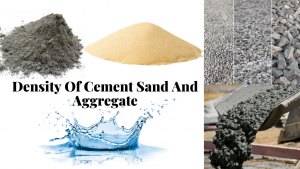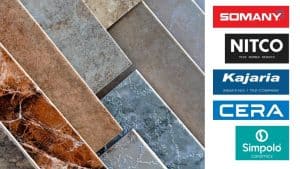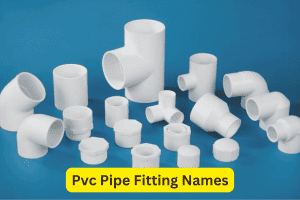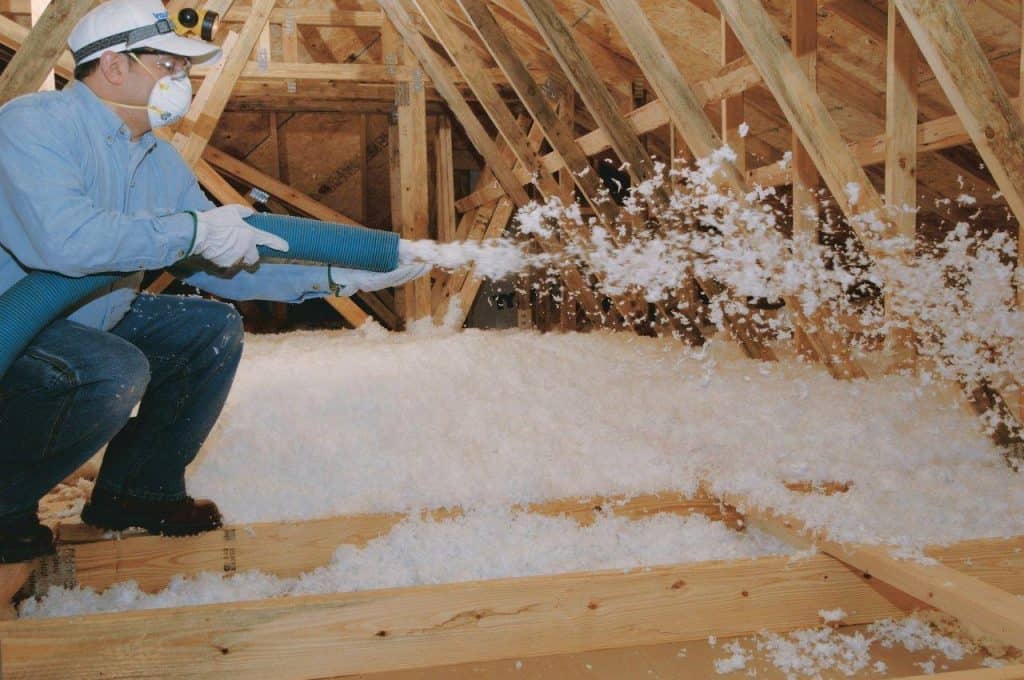
In order for a home to be energy efficient, it must have adequate insulation. The main purpose of insulation at home is to limit heat transmission in regions where air flows. You may save about 15% on heating and cooling expenditures by sealing air leaks and installing sufficient insulation.
Your house is one of your most valuable assets and it is the place where you will spend a lot of time and unwind after a busy day. Thus it must be kept at a pleasant temperature all year long.
But before you hire a contractor, there’s something you must know- such as what is insulation and how it works, what are the different types of insulation and where you should install them.
So let’s find out the answers to all these questions.
What Is Insulation?
Insulation is a substance that acts as a barrier between the inside of your home and the considerably different temperature outside, reducing heat loss or gain.
How Does Insulation Work?
When heating and cooling your house, whether, in the winter or the summer, the insulation’s primary function is to keep the temperature inside stable without having to operate the furnace or air conditioner continually.
The movement of air into and out of your house is caused by gaps and openings in doors, walls, rim joists, the attic, electrical outlets, windows, and crawl space. In many houses, air leakage is a serious issue that contributes to energy loss and discomfort.
In order to overcome this, proper house insulation may help you save money on energy bills while also making your home a pleasant place to live and visit all year.
Where Does Your House Need Insulation?
- Firstly, insulate your attic, outside walls, and crawl space, as these are the places that lose the most energy.
- Secondly, wrap hot water pipes in tubular insulation to keep them warm and prevent them from freezing.
Tip: Use high-quality pipe insulation wrap to keep your pipes warm. When compared to non-insulated pipes, insulating your hot water pipes minimizes heat loss and can boost water temperature by 2 to 4 degrees Fahrenheit, allowing you to use a lower temperature setting.
- Thirdly, heating and air conditioning vent ducts that have insulation have less energy consumption, vibration, and noise. In the garages, attics, unfinished basements, or crawl spaces properly insulating air ducts can be a good step for your home’s energy efficiency.
- Water heaters should be insulated to avoid wasting money on electricity.
Tip: Look for insulated pre-cut coats or blankets with at least an R-8 insulation rating. Standby heat losses can be reduced by 25 to 45% by adding insulation to your water heater. Water heating expenses will be reduced by 4 to 9% as a result of this.
Different Types Of Insulation Material
The R-value of the various types of insulation materials refers to how well it resists the movement of heat. R-values differ depending on the insulating material’s composition, thickness, and density. A higher R-value generally leads to improved temperature management and energy efficiency in your house.
Here, we’ve listed the six most common types of insulation materials along with their R-values.
Cellulose (3.2 to 3.8 per inch)
Cellulose is a type of insulation created from recycled paper. Borate is also added by manufacturers for fire and insect resistance. The most common type of cellulose insulation is loose-fill insulation.
Denim (3.5 per inch)
Used jeans and post-industrial denim cotton are used to make denim insulation. Denim is non-toxic and non-irritating, making it simple to install for DIYers
Fiberglass (2.2 – 2.9 per inch for loose & 2.9 – 3.8 per inch for batts)
Fiberglass is the most often used insulating material. It’s often available in batts, rolls, and loose-fill insulation and is constructed of fine glass fibers. When working with fiberglass insulation, always use protective glasses, gloves, masks, and clothes since fiberglass is a skin and lung irritant.
Foam (6.5-7 per inch)
Polystyrene, polyisocyanurate, and polyurethane are all plastics that may be used to make foam insulation. Cementitious foam insulation, which is made of cement, can also be installed. Rigid foam boards can be sprayed or mounted with foam insulation.
Mineral Wood (3.0 to 3.3 per inch)
Mineral wool is a term that can refer to rock wool or slag wool. Rock wool is a man-made substance composed of a variety of natural minerals. Slag wool is likewise a man-made substance, however, it is manufactured from slag, a molten metal waste product. Natural fire resistance is a feature of both mineral wool insulations. Batts, rolls, and loose-fill are available.
Natural Fibers (1.4 to 2 per inch)
Fibers from nature: Cotton, sheep’s wool, straw, and hemp are examples of natural materials that may be used for insulation. These materials are usually made from recycled materials and have been treated to be fire, mold, and bug resistant.
7 Types Of Insulation For Your Home
Now coming to the most important segment, what are the different types of insulation for your home? Let’s find out.
- Foam Board Insulation
- Insulation Batts
- Loose-Fill Insulation
- Radiant Barriers
- Rolled Insulation
- Spray Foam Insulation
- Vapour Barriers
1. Foam Board Insulation
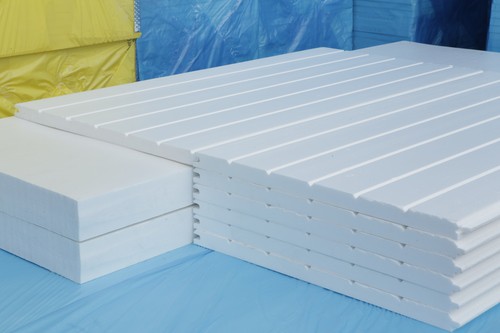
Foam boards, often known as insulating boards, are stiff insulation panels with a high R-value. Foam boards are mostly made of:
- Polyisocyanurate
- Polyurethane
- Polystyrene
Foam board insulation is one of the most prevalent forms of insulation since it has a high R-value and can be utilized in:
- Internal and external walls
- Foundation and basement walls
- Floors
- Low-sloped ceilings
2. Insulation Batts
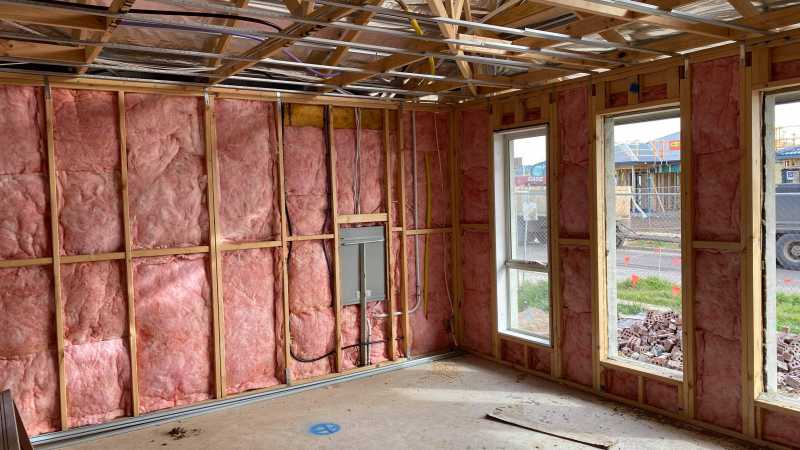
The next type of insulation on our list is insulation batts. Insulation batts are pre-cut chunks of insulation, primarily made of fiberglass, but also available in cellulose, mineral wool, natural fibers, and plastic. It acts as a blanket of insulation to your home.
Insulation batts can be your go-to option for insulating the following:
- Ceilings
- Floors
- Unfinished walls
Insulation batts are easy to use and the use of studs and joists make it one of the finest types of insulation. This can also be a good choice if you want to get your hands on doing-it-yourself (DIY).
Another reason why insulation batts are popular is that it is a cost-effective alternative to most other types of insulation.
3. Loose-Fill Insulation
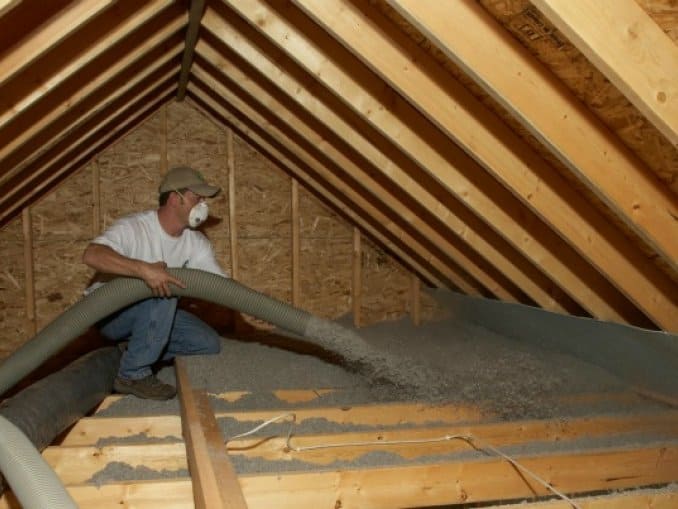
Blown-in insulation, also known as loose-fill insulation, is blown or sprayed into place using specialized tools. You may do the job yourself by renting an insulation blowing machine, but most people prefer to hire experts to do it.
Loose-fill insulation is an ideal choice for:
- Places that are hard to reach or irregularly shaped spaces
- Pre-insulated places
- Attics
The most common types of insulation materials used for loose-fill insulation are:
- Cellulose
- Fiberglass
- Mineral wool
Depending on the type of insulation material used, the R-value of loose-fill insulation ranges from 2.2 to 3.8 inches. In the case of loose-fill insulation, pneumatic devices are used to blow or spray the material into place and can be used to fill voids in walls.
4. Radiant Barriers
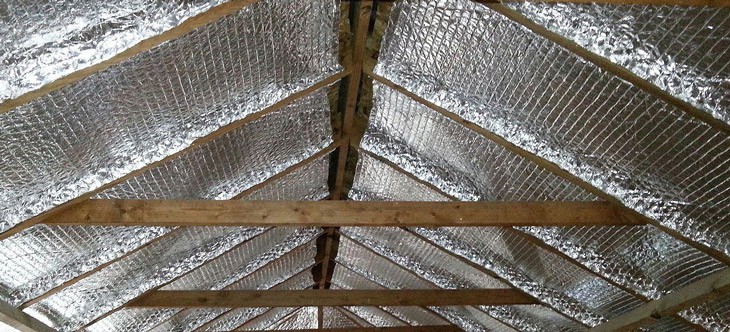
A radiant barrier is a form of insulation that, unlike most other insulations, works on the principles of reflection. In simpler terms, radiant barriers reflect heat rather than inhibit heat flow.
Radiant barriers are a good choice for
- Ceilings
- Adjacent garages
- Attics
- Floors
- Unfinished walls
Radiant barriers are designed in such a way that it maintains your house at an optimum temperature.
5. Rolled Insulation
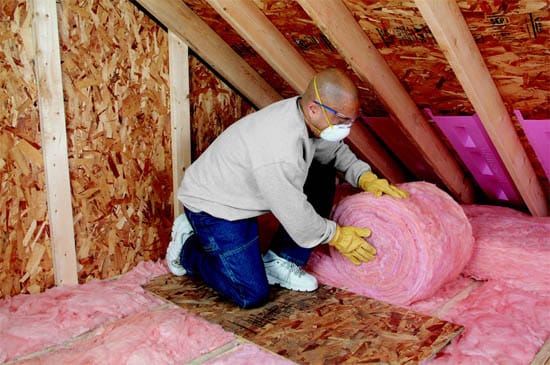
Similar to batt insulation, rolled insulation is a form of an insulating blanket. Insulation batts and rolls are distinguished by the fact that batts are put in pieces, whereas rolls are laid out in the gaps of the wall and ceiling framework. Insulation rolls have fewer gaps between sections than batts, making them occasionally more effective.
Rolled insulation is ideal for:
- Floors
- Ceilings
- Unfinished walls
- Other places where long spaces of insulation are required
Pre-cut lengths, ranging from 20 to 40 feet, are available to fit between studs and joists.
Standard fiberglass rolls, like batts, have R-values that range from 2.9 to 3.8 per inch of thickness, making them an effective choice of insulation. There are also high-density rolls of insulation with a high R-value of around 4.3 per inch.
6. Spray Foam Insulation
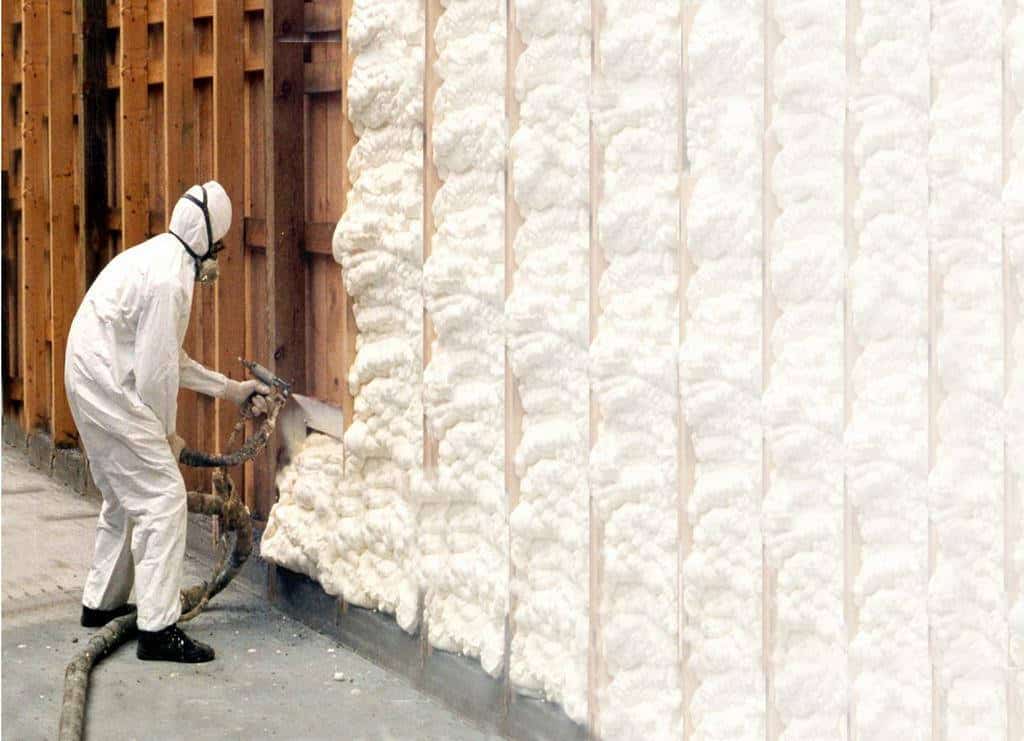
A spray foam insulation is a unique type of insulation made of liquid polyurethane or latex foam. This foam expands and solidifies to fill the gaps in ceilings and walls. You can also DIY it by using spray foam cans.
This is a great option for:
- Irregularly shaped places that are difficult to reach
- Places that are pre-insulated
The coverage ranges from sealing minor cracks and gaps to vast areas. It also offers customization as the foam dries rapidly and you can use stain or paint over it (such as in windows, doors, and vents).
There are two forms of spray foam insulation:
- Open-cell foam
- Closed-cell foam
Closed-cell foam is costlier than open-cell foam because the former offers a higher R-value of 6.2 per inch, whereas the latter offers 3.7 per inch.
This type of insulation is a great choice for colder regions.
7. Vapour Barriers
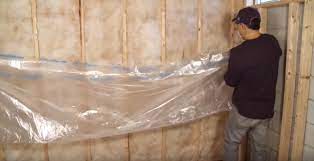
The last type of insulation on our list is vapor barrier insulation.
During cold winter conditions, a vapor barrier inhibits water vapor from traveling through your ceilings and walls. Vapor barriers are a good choice in humid and cold regions:
- Exterior walls
- Interior walls
- Wood walls
- Stone walls
If moisture accumulates in stud or cavity walls from either direction, the heat-conducting vapor will cause a drop in the R-value of the insulation material. Apart from that, mold and rot might develop over time as well.
To Conclude
Making choices for your home isn’t an easy task, especially when it comes to insulation- which will determine the year-round ambient temperature of your home.
The best type of insulation is determined by where you live and the quality of your home’s insulation you want to achieve. Also, think about whether you want to do the install the insulation yourself or hire an expert to carry out the task.
Different Types Of Insulation FAQs:
1. How many types of insulation are there?
Insulation is a substance that acts as a barrier between the inside of your home and the considerably different temperature outside, reducing heat loss or gain. There are various types of insulation available nowadays depending on the type of insulation material used:
1. Foam Board Insulation
2. Insulation Batts
3. Loose-Fill Insulation
4. Radiant Barriers
5. Rolled Insulation
6. Spray Foam Insulation
7. Vapour Barriers
2. What are the different types of insulation materials?
The R-value of the various types of insulation materials refers to how well it resists the movement of heat. The various types of insulation materials are
3. What’s the best type of insulation?
If you’re looking for a long-term insulation solution, you can opt for foam board insulation. Foam board insulation is a great choice because it not only offers your home an ambient temperature but also saves a lot on your monthly electricity bill.

